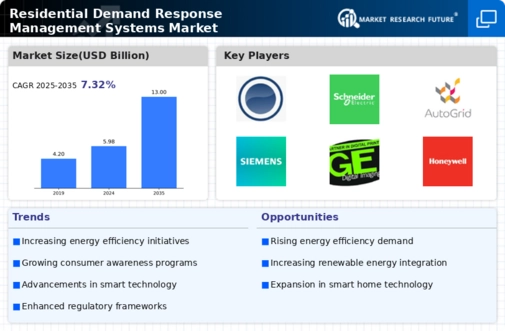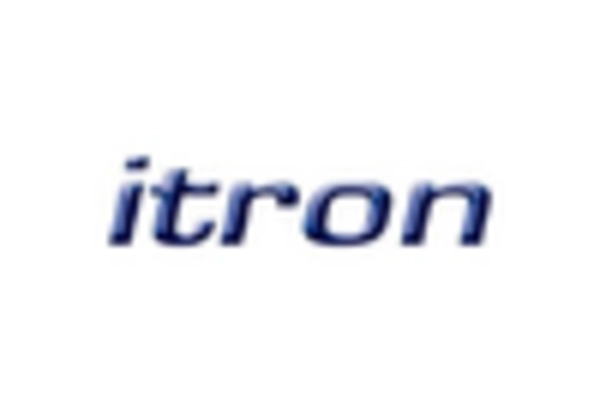North America : Market Leader in Demand Response
North America is poised to maintain its leadership in the Residential Demand Response Management System market, holding a significant market share of 3.0 by December 2025. Key growth drivers include increasing energy costs, regulatory support for energy efficiency, and a growing emphasis on renewable energy integration. The region's robust infrastructure and technological advancements further bolster demand, making it a focal point for innovation in energy management.
The competitive landscape is characterized by major players such as Honeywell, General Electric, and Duke Energy, which are actively investing in smart grid technologies and customer engagement strategies. The U.S. leads the market, supported by favorable policies and incentives aimed at enhancing energy efficiency. As the demand for sustainable energy solutions rises, North America is expected to continue attracting investments and partnerships to enhance its market position.
Europe : Emerging Market with Regulations
Europe is witnessing a growing interest in Residential Demand Response Management Systems, with a market size of 1.5 by December 2025. The region's growth is driven by stringent regulations aimed at reducing carbon emissions and enhancing energy efficiency. Initiatives such as the European Green Deal and various national policies are catalyzing investments in smart energy solutions, making Europe a key player in the global market.
Leading countries like Germany, France, and the UK are at the forefront of this transformation, supported by key players such as Siemens and Schneider Electric. The competitive landscape is evolving, with a focus on innovative technologies that facilitate consumer participation in demand response programs. As the market matures, collaboration between utilities and technology providers is expected to drive further advancements in energy management solutions.
Asia-Pacific : Rapid Growth in Demand Response
Asia-Pacific is emerging as a significant player in the Residential Demand Response Management System market, with a projected size of 1.8 by December 2025. The region's rapid urbanization, coupled with increasing energy consumption, is driving demand for efficient energy management solutions. Governments are implementing policies to promote energy efficiency and renewable energy adoption, creating a favorable environment for market growth.
Countries like China, Japan, and Australia are leading the charge, with major companies such as Itron and Eaton actively participating in the market. The competitive landscape is characterized by a mix of local and international players, all vying for market share. As awareness of energy management solutions grows, Asia-Pacific is expected to see increased investments and technological advancements in the coming years.
Middle East and Africa : Untapped Potential in Energy Sector
The Middle East and Africa region presents an untapped market for Residential Demand Response Management Systems, with a market size of 0.68 by December 2025. The region's growth is driven by increasing energy demand, urbanization, and a push towards sustainable energy solutions. Governments are beginning to recognize the importance of demand response programs, which are essential for managing energy consumption and reducing peak loads.
Countries like South Africa and the UAE are taking steps to implement smart grid technologies and energy efficiency initiatives. The competitive landscape is still developing, with opportunities for both local and international players to establish a foothold. As the region continues to evolve, investments in energy management solutions are expected to rise, paving the way for future growth in the sector.

















Leave a Comment